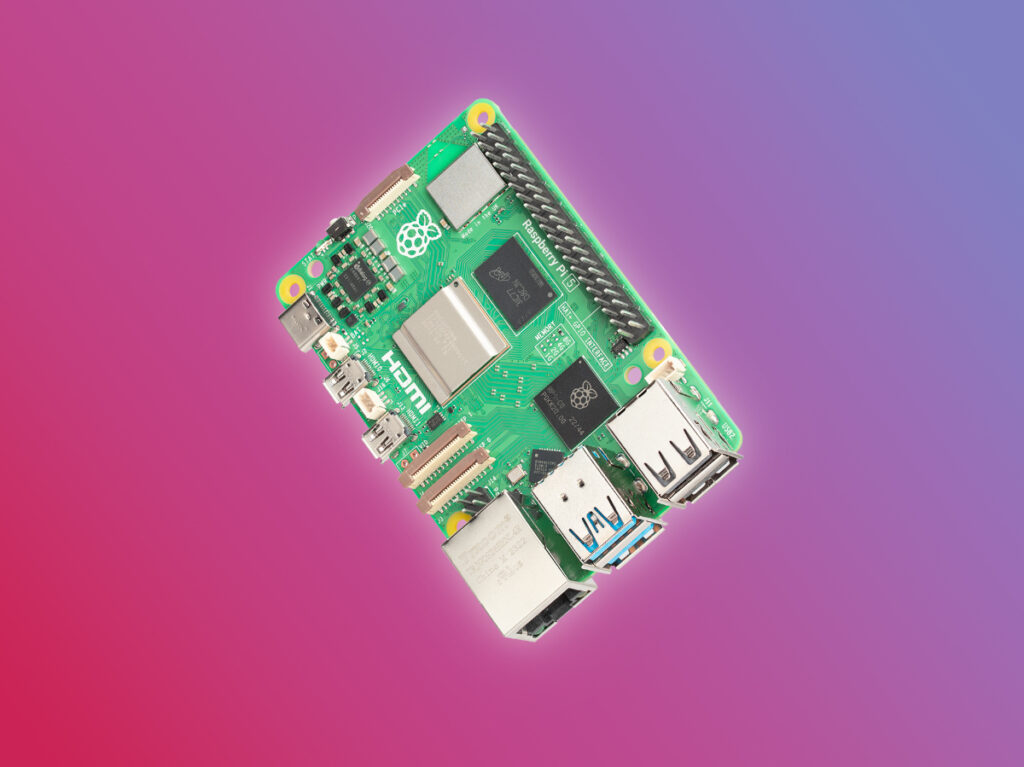- cross-posted to:
- technology@beehaw.org
- selfhosted@lemmy.world
- linux@programming.dev
- cross-posted to:
- technology@beehaw.org
- selfhosted@lemmy.world
- linux@programming.dev
The Pi foundation screwed over its original customer base by diverting practically ALL available inventory to business customers. Good riddance.
Why business would buy raspberries? I am out of the loop.
There are good business use cases for Pi’s, you can search online to learn more if you want.
That’s not the issue. The Raspberry Pi Foundation stopped supplying retail resellers and shipped 99% of ALL of their inventory to business customers for the past several years. Which is why you can’t find consistent stock, and why scalpers are mysteriously the only ones able to have reliable inventory.
It’s not a secret, you can look up any number of news stories covering it. Originally they could blame the chip shortage, but long after that’s over, they’re still diverting almost everything they manufacture to business channels, and screwing over the hobbyists who built their brand.
Screw them. I’m not supporting them with my money ever again, and I have double digit amounts going back to the RPi2.
Lol. Maybe I should sell my inventory. Still have like 2 RPI zero, 3 RPI3B+, 2 RPI4 and one RPI400… 😅 Their price is currently like 3-4x higher than I bought.
It’s not even just built their brand, built the damn software, documentation, did a lot of the testing and put up with pis being a bit dodgy out of the box for a year every time a new model came out.
So, they’re really easy to work with and relatively affordable, so great for prototyping, and acceptable for production if a company wants to get stuff out the door without getting a proper custom built solution that would be better in the long run.
When spin (electric scooter app rental company) pulled out of Seattle, they didn’t pick up a lot of the scooters there. People started pulling them apart when it was deemed they were legally abandoned, and it turned out they were all running on raspberry pi’s as their brains.
Ultimately it’s save money on the development side since it allows companies to use less experienced or specialized employees. It’s obviously expensive in the long term since a custom built system that only does what you need it to would cost less
I guess because it’s a cheap way to do embedded computing? Idk.
For example:
There are others. Plenty of small/medium businesses just don’t have the resources to develop small computers and the matching software stack. In that regards, the RPi is an appealing choice.
This thing looks so fucking cool and simultaneously somewhat dystopian
I gotta resist the urge… I have two Pis idle 🤦♂️
There’s a lot of people in this discussion taking about how raspberry Pi and the pi foundation isn’t worth your money, whether on principle, or just dollars per unit of compute.
I get it, but I have a question. Is there a competing SBC that has official PoE support? I know there’s half baked ways to sort that out separate from the device, but I have a few edge cases where the last viable option was the pi 3B+. The official pi 4 case is horrendous for airflow, and third party cases usually either assume you want no protection (and all the airflow) or you want to handle thermals by contact pads passively (making it difficult or impossible to use the PoE hat), or are just as bad as the stock case for airflow, but they have enough room inside to add a hat, in which case, why go third party when the official case is equally terrible?
The pi 3 had a PoE hat, and a case you could take the top off and get decent airflow. Too bad the fans in the first gen PoE hat are unicorns in terms of power draw, with no way to adjust the power curve for the fan connector to suit a different fan, and since they’re unicorns, you can’t find them for purchase, and if you find something remarkably similar, they’re still slightly different enough that they don’t work (I’ve tried). So the fans burn out and IDK, good fucking luck I guess. Buy a new PoE hat?
Then there was the gen 2 PoE+ hat which released alongside the pi 4, which supposedly works with the 3 as well, which I haven’t tried yet, but I’m planning to.
In every case, I have done network monitoring and service nodes that aren’t exactly local to a power receptacle and they need PoE. The pi 4 eliminated itself because of the garbage case design of the official case and the lack of thought by those doing the third party cases… so I’m looking at the 5 like, finally, they got it right.
Now everyone is talking shit about the pi foundation, which I can completely understand, but for the application I need these for (and my pi 3’s have been in service for like ~5 years and probably need to be refreshed), what other option do I have? What’s decent with a good case and PoE input? PoE or PoE+ doesn’t matter, I just need to be able to package it up into a relatively small footprint for the application.
Anyone have any suggestions? I’m all ears. I’ve googled till I’m blue in the face and I can’t even find an SBC that has an option for PoE, I never got to looking into whether it has a decent case or if it will run my software…
Even the Pi has lost its headphone jack…
I mean, if you have USB, for a non-mobile platform, it doesn’t really matter. It’s not hard to get a USB audio interface.
For cell phones or laptops, I can understand not wanting another thing to plug in, but for something like a Raspberry Pi…shrugs
And you can just get an audio dac hat.
Hmm. Yeah, though I have to say that the USB route looks cheaper.
USB audio will always be better in pricing options, but the question is, which will give you better sound for the price. Of course, this only matters if you think audio quality is more important than price.
Why would you expect USB to constrain your audio quality?
You’re not getting better 0s or 1s based on which bus they’re sent over to the DAC.
Please re-read my response. I never said that USB would always constrain the audio quality, but if you get a cheap USB to aux converter, the quality would be lacking vs a more expensive solution.
You are making just such a weird argument and it sounds like you are retroactively trying to salvage a bad position because you made a mistake.
-
If you care strongly about audio quality. A built-in doesn’t have any quality guarantees… why then does usb vs hat matter?
-
If quality is your concern why bring up price in the first part? It is blatantly obvious that cheap parts *might" equate to cheap quality. This is blatantly obvious.
-
Obviously there will be USB solutions that are equal or better solutions than prebuilt rpi dac hats since the primary dac hats are exceptionally niche.
This response just sounds like you got caught out in your mistake/bad argument. Why be a dick about it?
-
I generally hate the “just get dongles lol” argument but… maybe it’s not a huge loss in this one specific case. I’ve had four models over 3 generations (B, 2-something and 3) and the audio jack always kinda… sucked.
To be fair, the pi’s have always been famous for low quality sound cards, so there’s plenty of hats that can add the functionality.
It’s a shame that even the Pi Foundation is cutting corners. Cutting corners and removing features all while not even coming close to their target $35 price. Almost double for the base model. This doesn’t feel like it fits the spirit of the original Pi Foundation goals at all.
Very cool they’ve added an interface to connect a peripheral that can have one though.
Great, more unobtainium
Have they been difficult to get? I’ve always been vaguely interested but never actually looked into getting one.
Go to https://rpilocator.com/ and filter by your “region” and check for yourself. Most models seems to be available. The Rapsberry Pi 5 is available for pre-order from a number of suppliers.
I mean uou can get 4’s at retail prices pretty easy right now.
Can’t wait for this to be impossible to buy from anyone but scalpers.
https://rpilocator.com/ shows the Pi situation has been solved for a while.
Not really. Higher end models are regularly sold out. In stock Pis are sold at an insane premium.
We’d like to thank you: we’re going to ringfence all of the Raspberry Pi 5s we sell until at least the end of the year for single-unit sales to individuals, so you get the first bite of the cherry.
I want to be excited about this, but I just don’t believe I’ll actually be able to get one for retail price. For much of the RP4 lifecycle they prioritized corporate sales, and regular consumers were out of luck. I don’t have a lot of faith in them right now.
we’re going to ringfence all of the Raspberry Pi 5s we sell until at least the end of the year for single-unit sales to individuals, so you get the first bite of the cherry.
They’re probably doing that for first batch bug fixes.
To keep alive the community that maintains the packages that businesses use? /s
There are a few things you won’t forget and the last years were one of those events. Thankfully the competition made leaps forward regarding software support.
Do you remember FTDI-gate 1 & 2 (approx. 1 decade ago)? I do and FTDI never made it back onto my BOM and probably never will again, at least until SiliconLabs, WCH, and Holtek screw it up.
We are dumping the RPI computer modules form our BOM too. The N100 is at a very low price point and readily available. Never again in my BOM.
It’s gotten to the point with Windows 11 killing so many thin clients for businesses with TPM that you can typically find used ones for nearly as much as a Pi. Unless you need the size and efficiency I just struggle to find reason to buy another Pi if I need to selfhost something.
Pis are really cool but they really have become more corporate focused and it shows.
Love the PCIe interface upgrade. Hope they expand on it even more in the future.
deleted by creator
Comparable power consumption too? Similar GPIO available?
Are you even comparing similar things
You can get similar power consumption.
As for gpio… Add a Pico as a USB pass-through for a few bucks.
So an additional device hanging in the breeze just to gain even some features and pico is hardly a replacement for full rpi gpio. Doesn’t really seem like a better solution.
It all depends on what your usecase is. If someone’s just starting out and wanting to do gpio stuff with a Linux os, yeah the pi may still be the best bet since it’s got such a large following and guides written. But if someone’s got more experience and just needs a cheap small form factor machine to run Linux and interact with some non mission critical gpios, a small nuc with a pico will give you a greater bang for the buck!
Obviously it is usecase dependent. But original comment claimed you are better off getting a small nuc for the same price, as if it is better for any usecase. Please, go reply to them :)
Dell thin clients have gpio
And are way bulkier with much larger power draw
Would you recommend a particular Beelink model?
I have been interested after seeing some reviews, but I’m not sure what would be the best deal.
Hence would greatly appreciate some recommendations.
Seriously. I was thinking about one for a home theater pc a bit ago. Bought a used thinkcentre off ebay for $40 instead. Much better performance and price.
https://cheapskatesguide.org/articles/best-mini-servers.html
This article was trending at the time. On hackernews I think.
I really did get the $40 price for an m600 like he mentioned in it.
Thank you for posting this!
Realistically probably not getting one for less than $160CAD.
At that point, might as well just buy a used Dell optiplex or something. These boards are absurdly priced, and you’ll never get it for MSRP.
Even with the added power consumption of the Dell you’ll pull out ahead lol
I remember when the Raspberry Pi was the amazing $15 computer. Times have changed.
Amazing for what exactly? I remember them being unreliable, slow af and not really good for much other than collecting dust.
I mean sure the idea was cool, in principle, but they needed a serious upgrade in specs. Now they got it and everyone bitches bc it comes at a price?
- Kiosks – my makerspace uses one for guest signin
- Pihole – make your life less ad-infested without browser plugins
- Octoprint – run your 3d printers
- Home voice assistant without relying on a big company of any kind, or sending them sounds of you having sex
The first models were rough on reliability, but they got a lot better around Model 2B and onward. SD cards with A1 or A2 rating help a lot.
I don’t need any of those things tho. Mostly what I need is decent IO throughput which was unnecessarily constrained on earlier pis by poor design choices. The pi4 is the first to really shine in that regard.
I have a pi2 and I used it as a libreelec media center, and it was Ok in that capacity, but it’s far too slow to transfer larger files regardless of how you do it (all relies on a slow usb interface).
Idk about everyone else but I was fine with the specs. A basic Linux machine that can hook up to the network and run simple python scripts was plenty for a ton of use cases. They didn’t need to be desktop competitors. The market didn’t need to be small form factor high performance machines, and I’d argue it wasn’t.
They still sell the old slow ones don’t they? from the website: “Raspberry Pi 1 Model A+ will remain in production until at least January 2026” “Raspberry Pi 3 Model B will remain in production until at least January 2028” etc etc.
If you like pain, go get yourself a rpi1 lol. As for me, idk… I’m drawn more to VMs and containers which can run very well even on a 2011 tower pc (with few upgrades over the years).
Used Lenovo Thinkcentres are also a good option.
“we notice everyone is having trouble getting our previous model due to scalpers, so we released a new version at double the price!”
/s
For the small price of 250 scalper dollars you will be able to buy it
I think it was a mistake to remove hardware video encoding. Even the hw encoder for H264 1080p 30fps was better than no encoder. Apparently they think sw encoding can replace it…yeah… the cpu is more powerful, but not that much more. I think intels N100 processors will be more competitive for applications involving video/webcam
Are they still playing apologetics for the cops? Because if so, no thanks.
Well – they never really backed down on what they did. Far as we know the out-and-proud espionage cop is still in their payroll, and the only response they ever gave to the story was a generalised ‘We think the entire thing is being astroturfed and that no one reasonable is ACTUALLY against us hiring this guy who bragged about all the espionage he did’ back in the day.
They never said anything about it since. So it’s fair to assume they still believe in what they did.
What does that mean?
Here’s a google prompt for you: “raspberry pi police”
No need to be an ass about it. For those who don’t want to sift through an article, the RPi Foundation apparently hired an ex-cop who had been known to use their products to conduct surveillance, and that caused a controversy.
“Are they still [irrelevant complaint]”
“What?”
“GoOgLe iT”Sigh…
I kind of moved on to other devices or older models, depending on what is needed. If you just need a low power computer that can run Linux for simple tasks and projects, there’s now lots of alternatives. So far I’ve tried a Banana Pi BPI-M5 and a Le Potato and they’re both promising.
There’s a few instances where an original Raspberry Pi is still needed. For example, it’s super easy to install Home Assistant on a Raspberry Pi while not really supported on other experimental boards. Same with GPIO tinkering with some hit and miss implementation on alternative boards.
The only negative thing that I’ve began not to like about the Raspberry Pi was/is the power management and consumption on the version 4. The fact that I had to use a “dumb” USB-C charger and that everyone on forums and in comments were always “screaming” that you needed a beefier or more powerful power supply kind of killed the enthusiasm for me. Like, I can charge my laptop using a power bank and PD, while the Raspberry Pi 4 complains that it doesn’t get enough power from the same bank. I’m sure they fixed their power issues and PD negotiation in the version 5 but apparently, it will also necessitate a pretty “good” power supply because it can pump up to 25 watts. Personally I don’t need that much power for most of my projects and it’s even annoying because it significantly reduced/reduces the number of ways that I can power the board.
Still, I’ll certainly try it if I can get my hands on one. They are very nice devices and their popularity makes them very standard and compatible. But I’m not in any rush because I’ve since tried alternatives and some will also do just fine too, or even better.



















